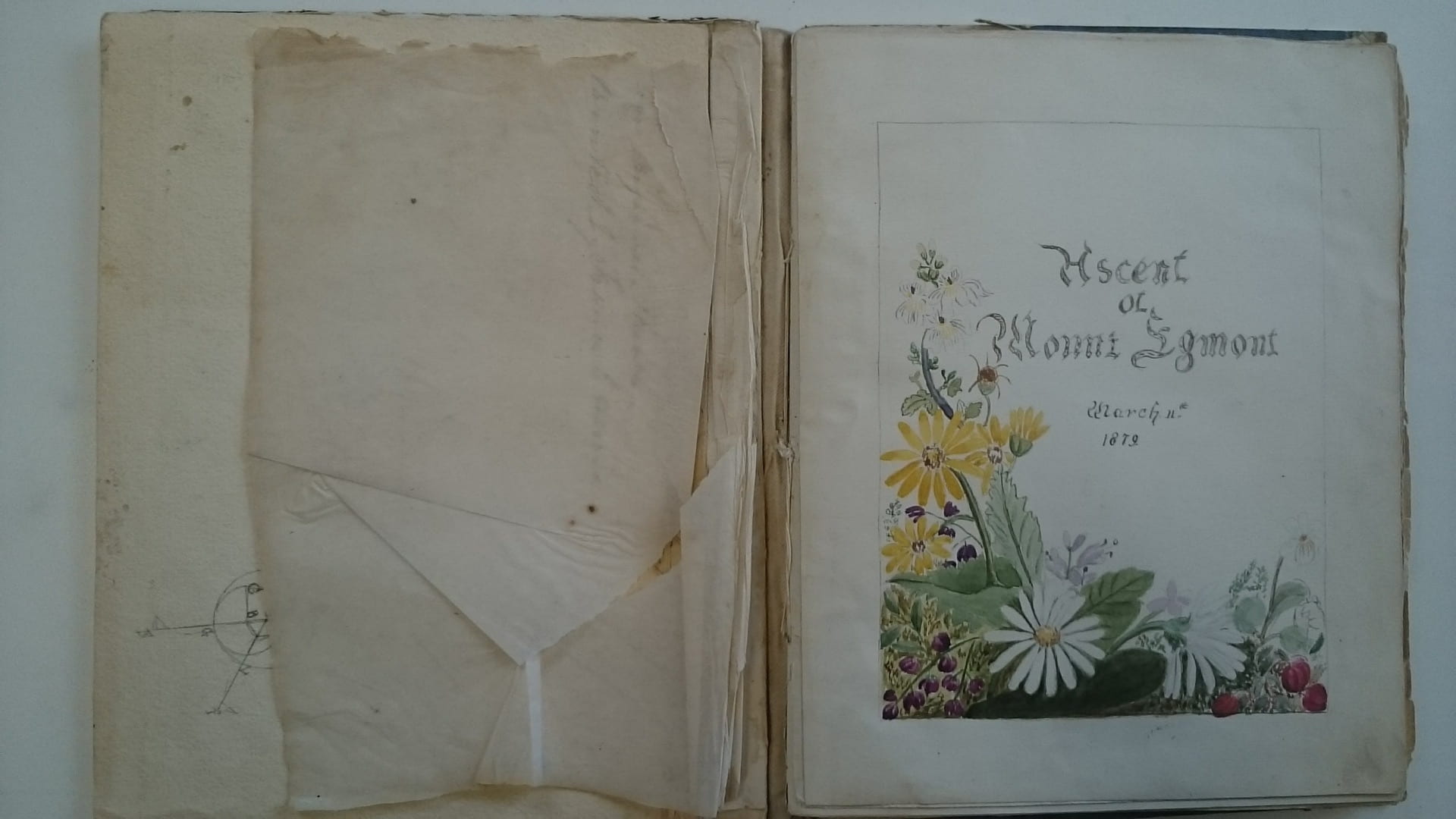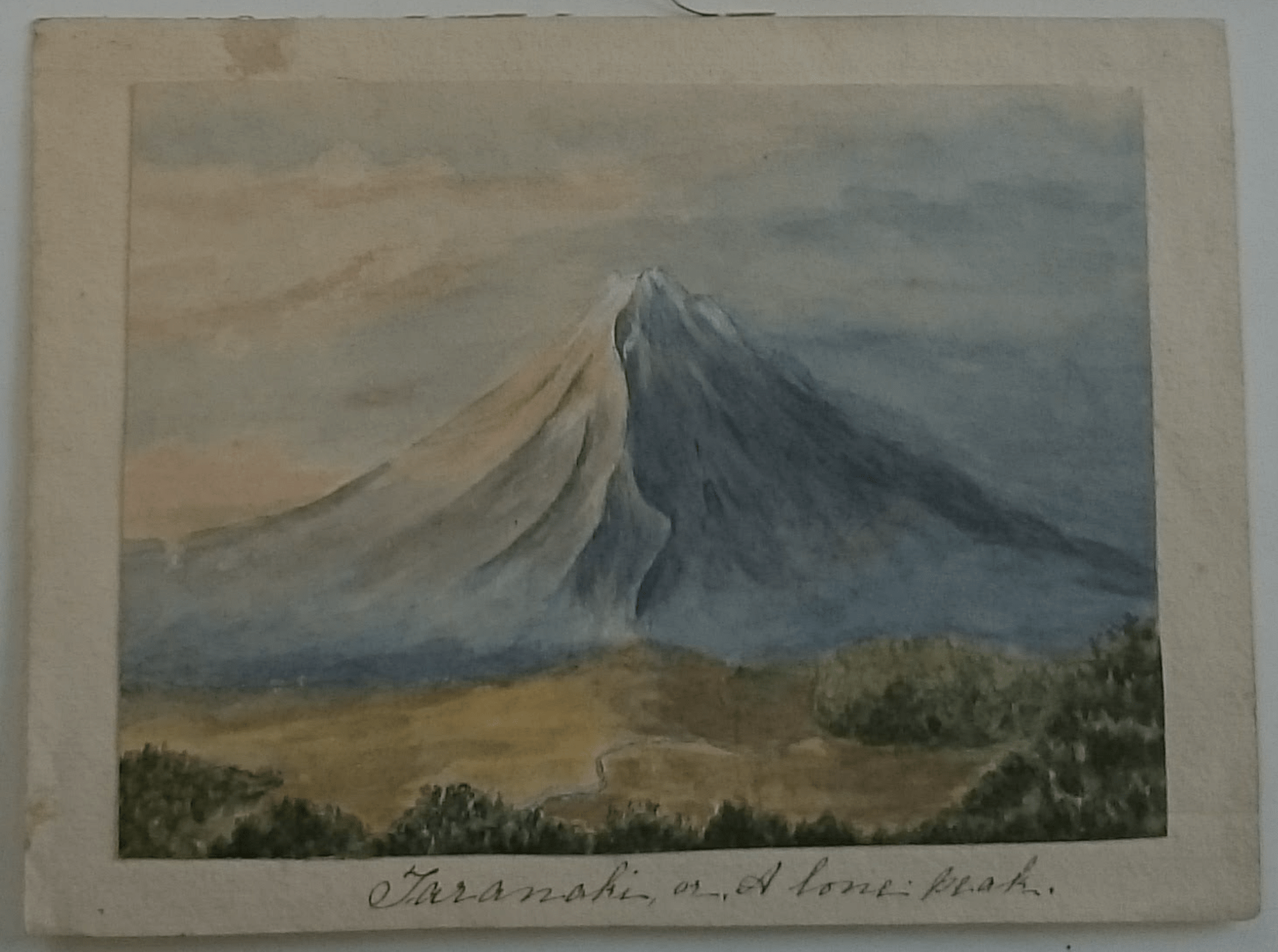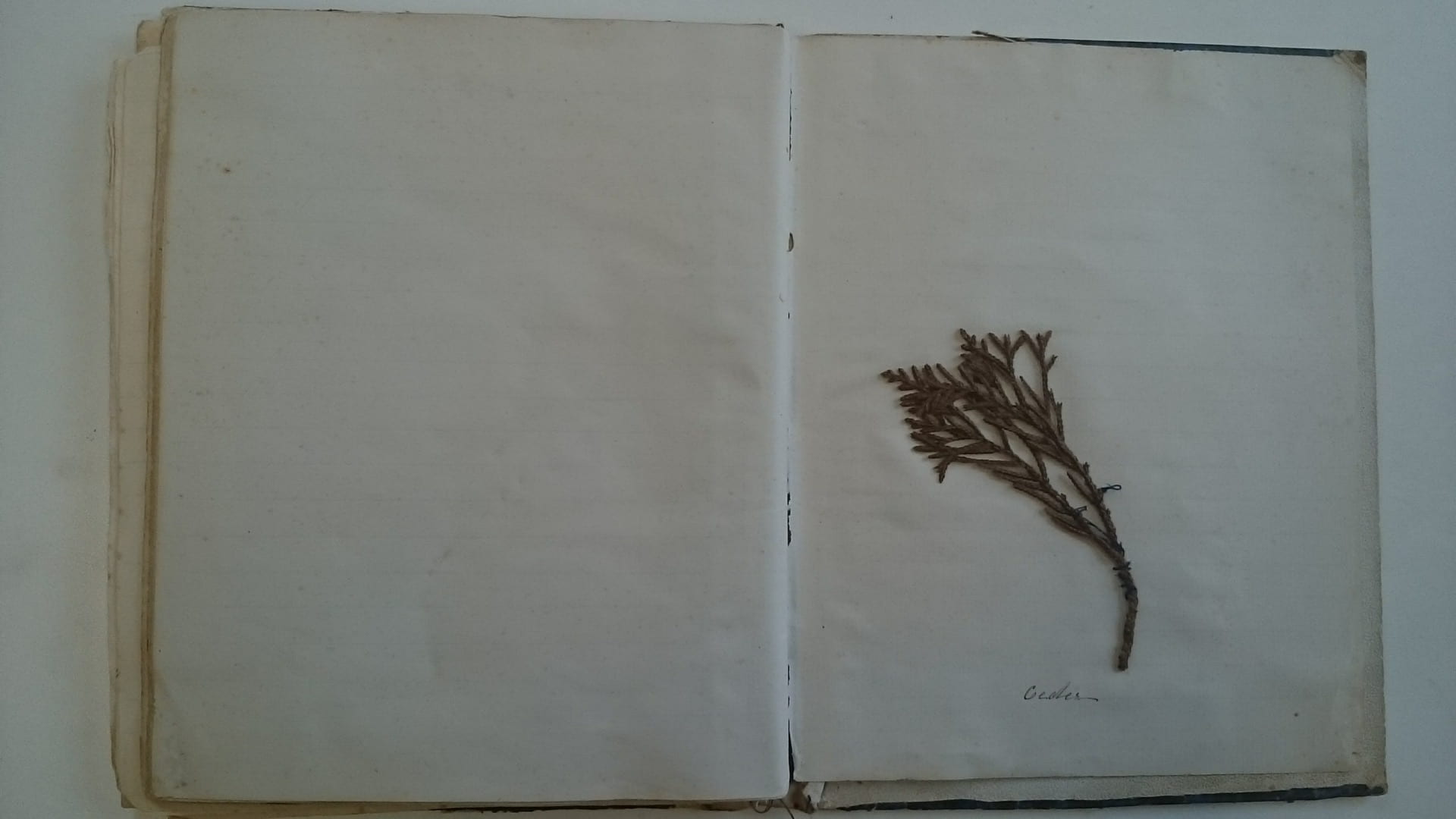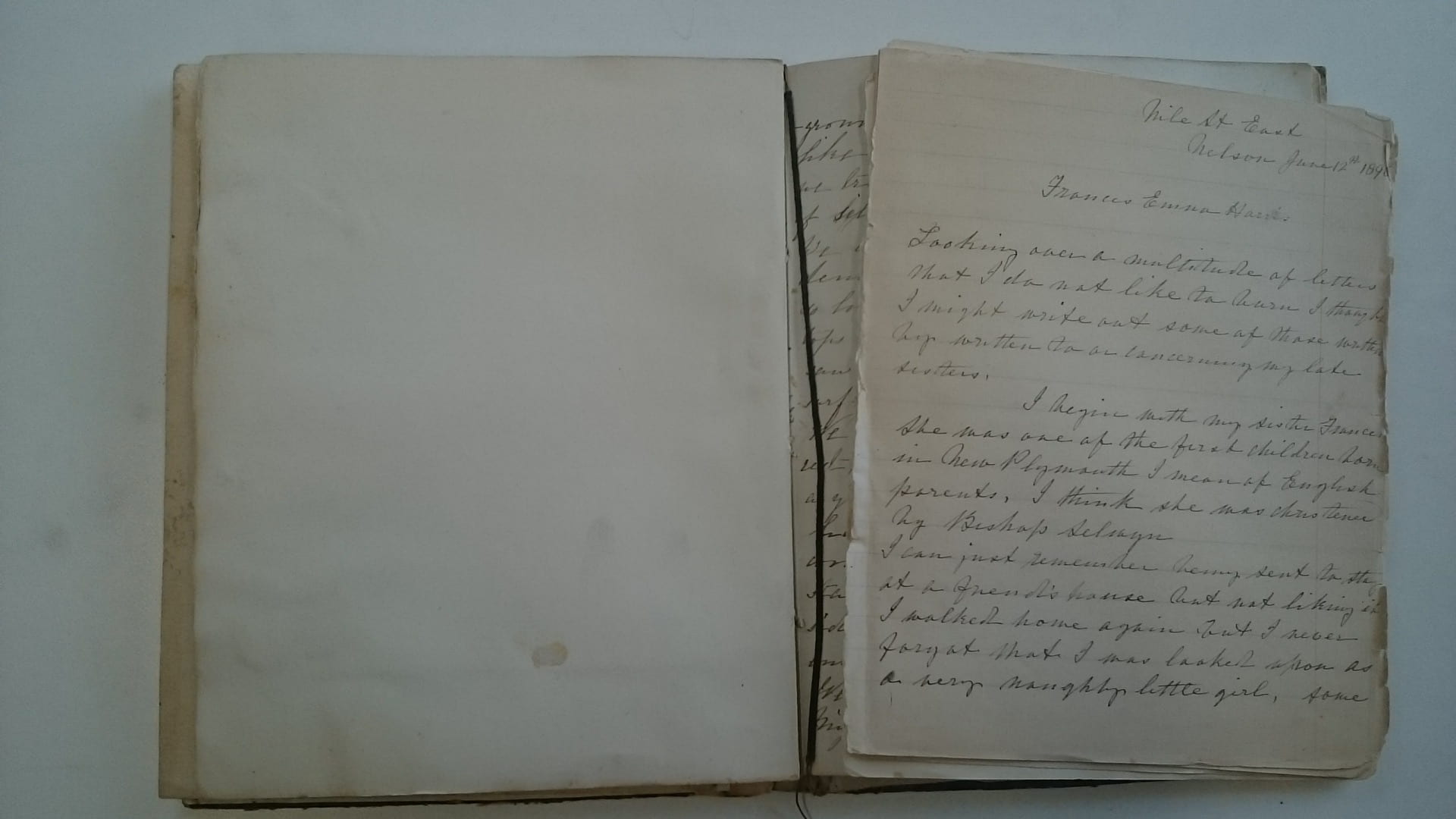By Michele Leggott
Frances Harris is within reach of the summit of the mountain she called Egmont, the only woman of the party still in contention for making it to the top after several hours of climbing in her short grey homespun dress, black jacket and sensible boots. Women have climbed the mountain before this moment in March 1879 but Frances is acutely aware of her gendered place in the climbing party:
I think that I must have risen several degrees in the estimation of the guide, who evidently had a poor opinion of women as mountaineers, when he said that as I had got so far I must go to the top. I said ‘yes, if you will help me?’ We had now the most difficult part to ascend. Passing between the hump and the mountain we came round to the town side. After climbing a little way the most lovely view broke on our sight: standing out clear and sharp against the sky were Ruapehu and Tongariro. I shall never forget the scene, to describe it were impossible. It may not be out of place here to mention that two gentlemen made the first ascent of Ruapehu about this time.
Then upward, onward, over loose scoria. It was a case of three steps forward and two back. I held on tightly to two sticks which were held one by the guide, the other by Mr G; in this way we reached the top.

The passage is part of Frances’ illustrated journal entitled ‘Ascent of Mount Egmont, March 11th 1879,’ now live on the website under the title A Wonderful Panorama. The handwritten text is accompanied by 10 sketches in watercolour, pen and ink and pencil depicting scenes from the three days Frances and her party spent on the Pouakai Range and Mount Taranaki itself. Three men and three women, identified only by initials, left New Plymouth early on the morning of 11 March 1879, travelling 11 miles up Mangorei Rd to the farm of Stephen Coad, who was to guide them into the Pouakai Range, across the Ahukawakawa swamp to a camping site on the mountain from which the party made its attempt on the summit 12 March. Frances’s prose is detailed and lively. She observes her surroundings with close attention and, like Emily, engages the natural world around her: ‘little stones covered with perfectly black moss that made one think the kitchen chimney had taken fire’; ‘For some distance we walked on the moss which felt like Turkey carpet, but even Turkey carpets on an inclined plain are trying to walk on and we got tired of the moss.’ A botanical specimen identified as cedar has been attached to the final page of the journal with blue sewing thread immediately after a paragraph listing the alpine and sub-alpine flora Frances and her companions observed during their expedition.
Another insert in the pages of the journal is the nine pages of notes about Frances written by Emily in 1898, presumably as part of the archiving of her sister’s work and part of a larger project envisioned at the time: ‘Looking over a multitude of letters that I do not like to burn I thought I might write out some of those written by, written to or concerning my late sisters.’ Whatever else Emily copied out, we have good reason to be grateful for the survival of the notes about Frances. They are a marvellous window on colonial childhood, its pleasures and perils:
When she was a few years old we were all playing near a stream in the garden and close to a well a few feet deep. We were playing houses, little Frances’ seat was pushed back & back until suddenly she fell head first into the well. Our loud cries brought my mother and she stooped down & catching hold of her feet pulled her out dripping wet and nearly drowned. She was a fine healthy child & it did her no harm.
In addition to a transcript of the journal and Emily’s accompanying notes we have uploaded a gallery of images and an account by our Summer Research Scholar Toyah Webb about her serendipitous footstepping of Frances during a trip to Taranaki earlier this year. Toyah walked the Pouakai Circuit, taking a route that directly intersects with that of the 1879 party. Like Frances, Toyah was focused on the flora of the mountain and its ranges, in her case to capture video footage for her project, which is based on Emily’s handcoloured New Zealand Flowers, New Zealand Berries and New Zealand Ferns. Thus two parts of the archive, 1879 and 1890, coalesced for a researcher attuned to the Harris story.



perfect timing: today is also the 11th of March. Celebration for Frances!